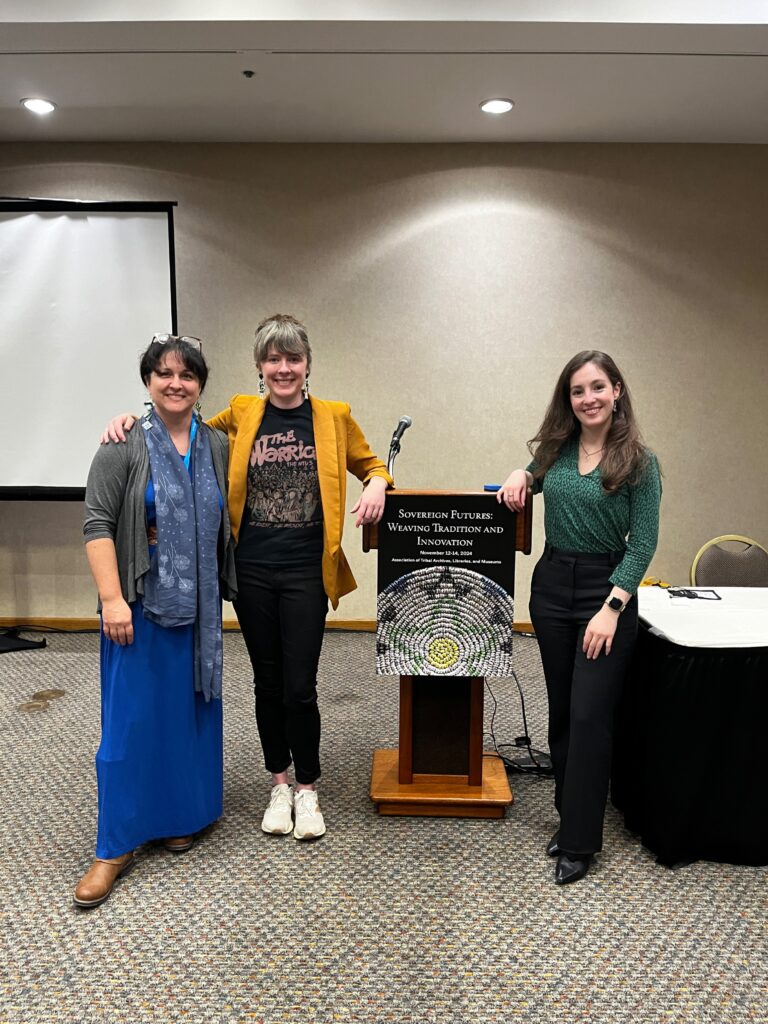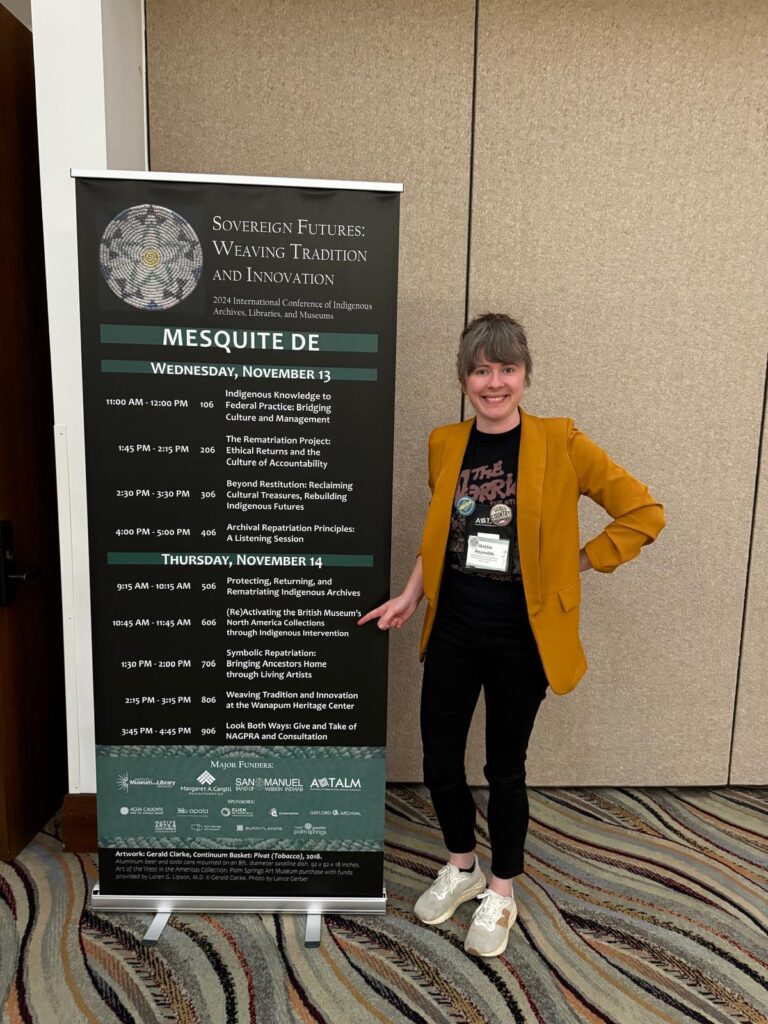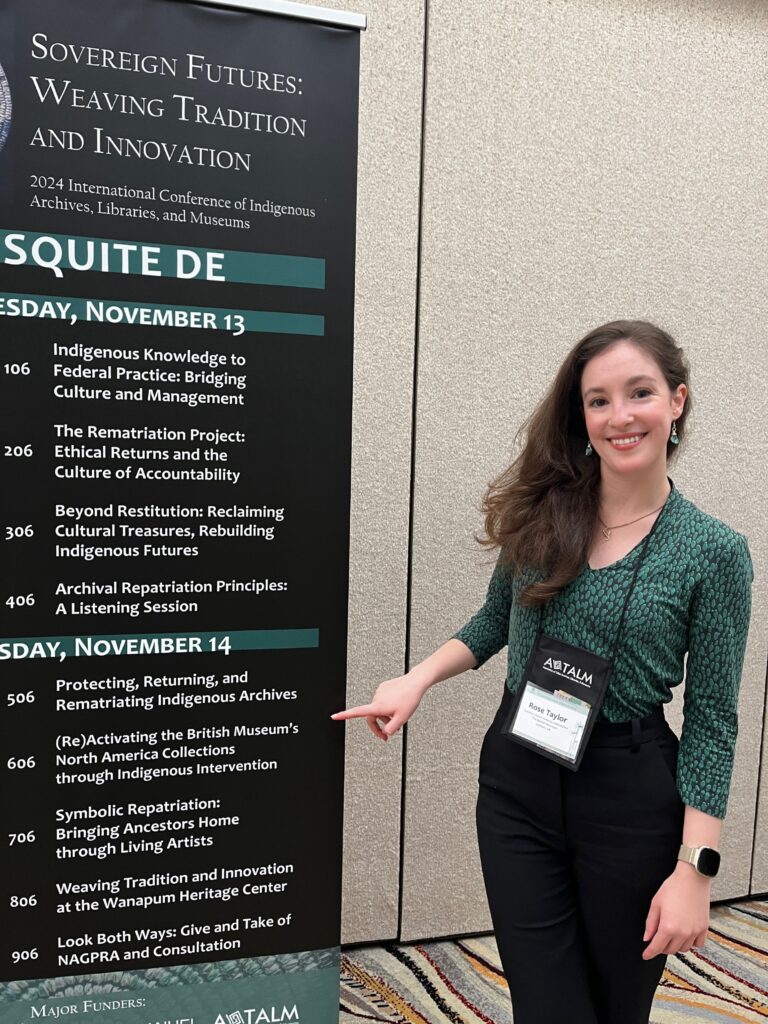From Cohort to Conference: Presenting Indigenous Engagement with the British Museum’s North America Collection
Written by Rose Taylor, Curator: Americas, British Museum
‘I think this would be great for us to do, but the deadline is tomorrow night, shall we go for it?’ This is how an idea to co-present at a conference started, by firing off an urgent email to Mattie Reynolds (Choctaw Nation of Oklahoma), the Department Chair and Assistant Professor of Museum Studies at the Institute of American Indian Arts (IAIA). 9 months later in November 2024, with generous support from the International Training Programme (ITP), we’d reconvened in the sunnier climes of Palm Springs, California, at the Association of Tribal Libraries, Archives, and Museums (ATALM) conference. Our collaboration was rooted in our shared interest in Native North American contemporary art and raising its visibility, which began when we first met at a symposium, Unsettling American Art History, at the Courtauld Institute in June 2023. This initial connection inspired us to stay in touch, with the goal of fostering a collaboration between the IAIA in Santa Fe and the British Museum. The first manifestation of such collaboration was the pleasure of hosting Mattie as part of the 2024 ITP cohort.

Knowing Mattie would be joining us for a period over the summer, we conceived of a conference presentation that would both discuss the experience of ITP for Mattie, particularly through the lens of an Indigenous woman, and to highlight the British Museum’s Native North America collections. Our hour-long session, entitled “(Re)Activating the British Museum’s North America Collections through Indigenous Intervention,” centered on how museums can further engage with Indigenous communities and the material culture they steward. To offer further depth and insight, we were also fortunate to be joined by Timara Lotah Link (Šmuwič Chumash), whom I have been collaborating with since 2018. Mattie spoke in particular relation to contemporary works in the collection and how these can be used curatorially to interact and intervene with historic material culture and outdated displays or narratives. Meanwhile, Tima discussed the significance of the historic Chumash collections at the British Museum for Chumash community members today. Together, the three of us shared experiences of how the British Museum works with Native North Americans to recontextualise their cultural belongings. This included investigating the role and importance of Indigenous knowledge systems in reshaping interpretation and display, and which, by providing space for Indigenous knowledge, aids in decolonising museum databases. Mattie and Tima also discussed how such engagement with collections in museums can lead to the revitalisation of certain practices.


In relation to ITP, Mattie discussed the great exposure the programme offered fellows to different areas of the British Museum as well as the placement at a partner museum. She gave an important and critical analysis of the changing role of large institutions like the British Museum in relation to Indigenous communities. She also reflected on her work with fellow ITP cohort members situated within the Americas Section, Tatiana Quevedo Mogollón, José Tarisson Costa da Silva Nawa, and Yanoa Pomalima Carrasco, and in particular, their work with historic material culture such as the Akan Drum (Am,SLMisc.1368).
With a predominantly Indigenous audience, we were very happy to have many conversations with people interested in applying to future ITP cohorts; a clear indication of the impact the session had and the importance of working with Indigenous community members. Meanwhile, we are nurturing plans for further collaborations.
